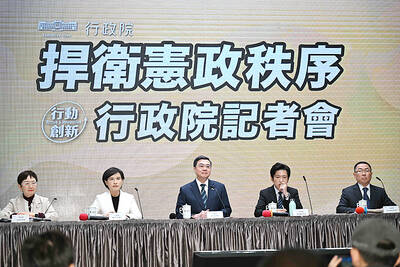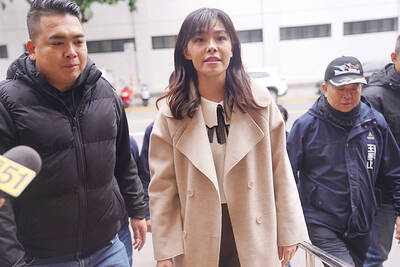Nintendo Co, Japan's second-largest maker of video-game consoles, is asking its liquid-crystal display makers to come up with a better small-sized flat-panel display for the next version of its Game Boy hand-held video-game console.
"Screen quality is everything," Nintendo engineer Tsuyoshi Kiyuna told a group of executives from display panel and component makers at a seminar in Tokyo last week.
"I want you to make a better screen to solve some of the problems we have now," he said.
Display quality is crucial to the success of a hand-held game player, a point Nintendo learned first hand when some users balked at the dark screen the company used in the first version of its Game Boy Advance player.
The Kyoto-based company addressed the complaints by revamping the player as the Game Boy Advance SP with a new, brighter screen lit from the sides.
Screen quality continues to plague Nintendo. One issue yet to be solved in the Game Boy Advance SP, which was released in February, is the presentation of colors. Dust trapped within the screen and accentuated by lighting has also dogged Nintendo.
Even with the better screen, colors still appear with a whitish tinge while black also doesn't display well, Kiyuna said.
Nintendo, which controls about 90 percent of the hand-held game market, hasn't said when it will release a follow-up model to the Game Boy Advance SP.
Besides a screen able to display colors more vibrantly, the company, which also makes the GameCube video-game console, also wants a screen free of dust.
Nintendo is asking panel makers to change the manufacturing process to reduce debris captured within the layers of a display, requesting that newer displays be made in dust-free clean rooms like those in which semiconductors are manufactured.
"The majority of complaints from [Game Boy Advance] SP users is about dust," Kiyuna said. "We want a dust-free screen and users of our next-generation hand-held game machine won't be happy unless we solve these problems."
Nintendo has yet to selected the supplier of LCD panels for its next hand-held console.
The company will decide after studying mockups and business proposals from screen makers.
Sharp Corp, Japan's largest maker of liquid-crystal displays, is the sole supplier of LCD panels for Game Boy Advance as well as the Game Boy Advance SP.
One other requirement for the new screen will be that it must consume less or equal power compared with the version used in the Game Boy Advance SP, Kiyuna said.
A Game Boy Advance SP panel consumes about 71 milliwatts of power, he said.

The US government has signed defense cooperation agreements with Japan and the Philippines to boost the deterrence capabilities of countries in the first island chain, a report by the National Security Bureau (NSB) showed. The main countries on the first island chain include the two nations and Taiwan. The bureau is to present the report at a meeting of the legislature’s Foreign Affairs and National Defense Committee tomorrow. The US military has deployed Typhon missile systems to Japan’s Yamaguchi Prefecture and Zambales province in the Philippines during their joint military exercises. It has also installed NMESIS anti-ship systems in Japan’s Okinawa

‘WIN-WIN’: The Philippines, and central and eastern European countries are important potential drone cooperation partners, Minister of Foreign Affairs Lin Chia-lung said Minister of Foreign Affairs Lin Chia-lung (林佳龍) in an interview published yesterday confirmed that there are joint ventures between Taiwan and Poland in the drone industry. Lin made the remark in an exclusive interview with the Chinese-language Liberty Times (the Taipei Times’ sister paper). The government-backed Taiwan Excellence Drone International Business Opportunities Alliance and the Polish Chamber of Unmanned Systems on Wednesday last week signed a memorandum of understanding in Poland to develop a “non-China” supply chain for drones and work together on key technologies. Asked if Taiwan prioritized Poland among central and eastern European countries in drone collaboration, Lin

NO CONFIDENCE MOTION? The premier said that being toppled by the legislature for defending the Constitution would be a democratic badge of honor for him Premier Cho Jung-tai (卓榮泰) yesterday announced that the Cabinet would not countersign the amendments to the local revenue-sharing law passed by the Legislative Yuan last month. Cho said the decision not to countersign the amendments to the Act Governing the Allocation of Government Revenues and Expenditures (財政收支劃分法) was made in accordance with the Constitution. “The decision aims to safeguard our Constitution,” he said. The Constitution stipulates the president shall, in accordance with law, promulgate laws and issue mandates with the countersignature of the head of the Executive Yuan, or with the countersignatures of both the head of the Executive Yuan and ministers or

BACK TO WORK? Prosecutors said they are considering filing an appeal, while the Hsinchu City Government said it has applied for Ann Kao’s reinstatement as mayor The High Court yesterday found suspended Hsinchu mayor Ann Kao (高虹安) not guilty of embezzling assistant fees, reducing her sentence to six months in prison commutable to a fine from seven years and four months. The verdict acquitted Kao of the corruption charge, but found her guilty of causing a public official to commit document forgery. The High Prosecutors’ Office said it is reviewing the ruling and considering whether to file an appeal. The Taipei District Court in July last year sentenced Kao to seven years and four months in prison, along with a four-year deprivation of civil rights, for contravening the Anti-Corruption